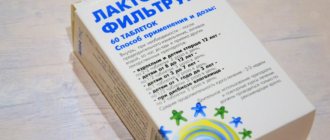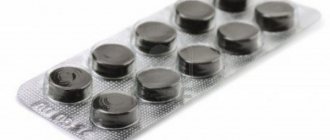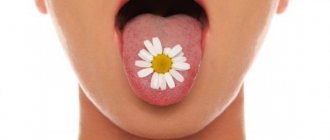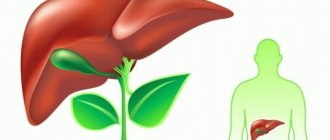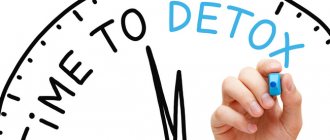Sometimes situations arise when you have to donate blood or urine to detect narcotic and psychotropic drugs in biological fluids. This may be required when passing a license or undergoing a scheduled medical examination. But what if a course of therapy using potent substances is prescribed? In particular, Phenazepam is a common psychotropic drug that is often prescribed by doctors to treat certain pathological situations.
How to find out how long it takes for Phenazepam to be eliminated from the body in order to fearlessly take the test? Is it possible to speed up the process of removing metabolic residues of the drug, and what methods are best to use? Let's look at this important issue for many.
On average, Phenazepam is eliminated from the body within a few days, but the process can be accelerated
Release form
The drug Phenazepam is available in the form of tablets and in the form of a solution for intramuscular or intravenous administration.
Phenazepam tablets are white, flat-cylindrical in shape, with a bevel. Tablets containing bromodihydrochlorophenylbenzodiazepine at a dose of 1 mg also have a risk.
The solution for intramuscular and intravenous injection is available in glass ampoules with a capacity of 1 ml. Package:
- cardboard box with 10 ampoules of Phenazepam and scarifier;
- contour blister packaging made of PVC film with 5 or 10 ampoules of the drug.
The cardboard pack is equipped with one or two packages, a scarifier and instructions for using the drug.
For hospital inpatients, Phenazepam is available in cardboard boxes with a cardboard grid. One box can contain 50 or 100 ampoules of solution.
Phenazepam is available in two main forms: tablets and injection solutions. Each ampoule of injection solution contains 1 mg of active substance per 1 ml of liquid.
Important! The medication is available only in ampoules of 1 ml. There is no alternative form of release of the injection solution.
Tablets on pharmacy shelves can be found in three dosages: 0.5 mg, 1 mg or 2.5 mg. It is worth remembering that the selection of the optimal dose is made by the attending physician.
There are many pharmaceutical companies producing Phenazepam. Among them:
- Valens;
- Moskhimfarmpreparaty im. Semashko;
- Akrikhin et al.
There are also many foreign companies producing the drug under other trade names.
Phenazepam analogues, list of drugs
Analogues of Phenazepam tablets are the following drugs (list):
- Tazepam;
- Nozepam;
- Medazepam;
- Lorazepam;
- Ativan;
- Tavor;
- Laurenine;
- Sidenar;
- Lorafen;
- Alprazolam;
- Diazepam;
- Grandaxin;
- Tofisopam;
- Tranquesipam;
- Fezanef;
- Fesipam;
- Phenorelaxan;
- Elzepam.
Instructions for using Phenazepam tablets, price and reviews do not apply to analogues and cannot be used as a guide. When prescribing, you must refer to the instructions for the specific drug; when replacing Phenazepam with an analogue, you must consult a doctor. It may be necessary to adjust the treatment regimen and dosage of the drug.
Pharmacodynamics and pharmacokinetics
The effects of Phenazepam are determined by the ability of diazepines to influence various parts of the central nervous system.
The anxiolytic effect of the drug is due to the influence of bromodihydrochlorophenylbenzodiazepine on the amygdala complex of the visceral brain (limbic system).
It manifests itself in reducing emotional tension, relieving anxiety, fear and worry. In its anxiolytic properties, Phenazepam is significantly superior to most other psychotropic drugs of the diazepine series.
The sedative effect is due to the influence of bromodihydrochlorophenylbenzodiazepine on the nervous structures in the central parts of the brain stem (reticular formation of the brain) and the nonspecific thalamic nuclei that form the diffuse thalamic system.
The drug has a general calming effect on the central nervous system, reducing the severity of reactions to external stimuli, psychomotor excitability, partly reducing daytime activity, reducing concentration, as well as the speed of mental and motor reactions, etc.
By regulating the function of the central nervous system, Phenazepam reduces the intensity of the effects of various kinds of vegetative, motor and psycho-emotional stimuli that affect the mechanism of falling asleep.
The hypnotic effect is expressed in the fact that during treatment with the drug, the patient’s onset of sleep is significantly facilitated, sleep deepens, and its duration increases.
In addition, due to its inhibitory effect on the central nervous system, the drug has the ability to potentiate the effects of hypnotics, anesthetics and painkillers (which is why Phenazepam tablets are not prescribed in combination with these drugs).
The action of Phenazepam as a muscle relaxant (that is, a drug that relaxes skeletal muscles) is mainly due to the ability of bromodihydrochlorophenylbenzodiazepine to inhibit polysynaptic (and to a lesser extent, monosynaptic) spinal stem reflexes.
The drug effectively relieves (or at least reduces the severity of) tension and excitation (including motor).
However, this same property may become a limitation in prescribing the drug to people whose work requires a certain speed of mental and physical reactions. In some cases, the muscle relaxant effect manifests itself in the form of a feeling of lethargy, increased weakness, etc.
The effect of the drug, aimed at reducing convulsive activity, is associated with increased presynaptic tension and suppression of the propagation of convulsive impulses (epileptogenic activity) arising in epileptogenic foci of the cerebral cortex, visceral brain, and also in the thalamus.
The anticonvulsant effect is determined not only by the effect of bromodihydrochlorophenylbenzodiazepine on GABA (gamma-aminobutyric acid - the main inhibitory neurotransmitter (neurotransmitter) in the central nervous system, responsible for balancing the influence of activating neurotransmitters), but also by the substance’s ability to influence the Na channel (voltage-dependent sodium channel).
It is possible that the tranquilizing, muscle relaxant and anticonvulsant effects are realized through the GABAA receptor, and the hypnotic effect is mediated by changing the flow of Ca2 ions through voltage-dependent channels.
In this case, sleep is very similar to physiological sleep and is characterized by EEG stages and phases typical for the latter.
Phenazepam has virtually no effect on the positive (productive) symptoms that accompany acute psychotic disorders (delusions, hallucinations, affective states, etc.).
In rare cases, patients may experience a decrease in affective tension and a decrease in the severity of delusional disorders.
When taken orally, the drug is well absorbed from the gastrointestinal tract. The time during which the maximum concentration of bromodihydrochlorophenylbenzodiazepine in the blood plasma is reached varies from one to two hours.
Phenazepam is metabolized in the liver, its half-life from the body in different patients can range from 6 to 18 hours. Metabolic products are excreted from the body mainly by the kidneys.
The pharmacokinetic parameters of Phenazepam in the form of an injection solution are not provided by the manufacturer.
Description
The drug "Phenazepam" is a multifunctional benzodiazepine derivative. The drug belongs to the category of highly active tranquilizers. Bromodihydrochlorophenylbenzodiazepine is the active substance of the drug; only when used correctly does it have a positive effect on the human body.
"Phenazepam" reduces the severity of tension, eliminates excitation of subcortical structures of the brain, and also inhibits polysynaptic spinal reflexes. The drug is often used as an anxiolytic and sedative hypnotic. The active substances have anticonvulsant and muscle relaxant effects. Due to this, the patient’s emotional stress is reduced, fear and anxiety disappear.
Indications, contraindications and side effects
Today, doctors prescribe Phenazepam for strictly defined indications. Among them:
- neurotic and neurosis-like states, mental disorders accompanied by anxiety, increased irritability, attacks of fear, lability of emotions;
- reactive type psychoses;
- hypochondriacal-synesopathic syndrome;
- various sleep disorders, autonomic dysfunctions;
- to combat acute attacks of fear, emotional stress;
- as an anticonvulsant drug to combat temporal and myoclonic forms of epilepsy;
- in neurology to get rid of tics, hyperkinesis, autonomic lability, etc.
Phenazepam is not used for myasthenia gravis, poisoning with a number of tranquilizers, antipsychotics, sleeping pills, and narcotic analgesics. A serious contraindication is during pregnancy and lactation, as well as disorders of the liver and kidneys.
Phenazepam is characterized by a large list of contraindications, and the side effects that are observed while taking the drug are also quite varied. This is due to the ability of the drug to influence the activity of the nervous system.
In most patients - especially in the initial stages of treatment - drowsiness increases, a feeling of chronic fatigue and lethargy appears, dizziness occurs, the ability to concentrate and navigate in space is impaired, symptoms of ataxia appear, the speed of mental and motor reactions slows down, and consciousness is confused.
In very rare cases, in response to taking medication, paradoxical reactions occur, which are expressed in the form of uncontrollable outbursts of aggression, phobias, hallucinations, anxiety, muscle spasticity, sleep disturbances, and the appearance of suicidal tendencies.
The hematopoietic system may respond to Phenazepam by reducing the concentration of its formed elements (leukocytes and postcellular structures, which include red blood cells and platelets), hemoglobin and neutrophil granulocytes.
Adverse reactions that are noted from the digestive system include: increased dryness of the oral mucosa, salivation, loss of appetite, constipation or diarrhea, heartburn, attacks of nausea, increased activity of liver enzymes (transaminases), jaundice, increased levels of alkaline phosphatase in blood.
On the part of the reproductive system, an increase or, on the contrary, a decrease in libido is possible; women may also experience symptoms of dysmenorrhea. In some patients, taking Phenazepam is accompanied by allergic reactions, including the appearance of skin rashes and itching.
Other side effects that can be caused by taking Phenazepam include:
- addiction to the drug;
- development of drug dependence;
- decreased blood pressure;
- visual impairment (in particular, double vision of objects before the eyes);
- weight loss;
- heart rhythm disturbance.
In case of abrupt cessation of Phenazepam use or reduction of its dose, patients develop the so-called withdrawal syndrome, which is often expressed in the form of symptoms that led the patient to take the drug.
special instructions
Oxazepam-based medications should be taken with caution when treating the following categories of patients:
- patients with arterial hypotension;
- over the age of 60;
- with a tendency to drug addiction;
- those suffering from drug or alcohol addiction;
- with diagnosed mental disorders;
- whose professional activity is related to driving a vehicle.
Tranquilizer therapy for these categories of people is possible, but patients must be under constant supervision of a specialist monitoring their condition.
Alcohol compatibility
During treatment with Oxazepam, drinking alcoholic beverages, even in small doses, can cause side effects due to the increased reaction of the drug together with ethanol on the central nervous system.
Renal dysfunction
The use of the drug for kidney pathologies can be carried out with caution. During therapy, liver function and changes in blood composition should be monitored.
Interaction with other drugs
The following drugs should not be taken together with Oxazepam:
- sleeping pills;
- sedatives;
- psychotropic;
- anticholinergics;
- antiepileptics;
- anticoagulants.
The drug enhances the effect of the listed groups of medications, which can cause an overdose or adverse reaction.
Instructions for use
Instructions for using Phenazepam are not difficult. A patient for whom this drug is recommended should read it carefully, and then use the instructions from it, as well as the information received from the attending physician.
General recommendations
Phenazepam tablets are taken orally. The tablet is placed on the tongue and, after waiting for complete dissolution, is swallowed without drinking water.
You should completely avoid drinking tea or coffee, as these drinks can reduce the effectiveness of the medicine. You should also avoid juices, as some of them can destroy the active ingredient of the product.
We must not forget that while taking the medication, it is not recommended to drive or perform other work that requires a high degree of concentration and maintaining a high reaction rate.
For patients prone to substance abuse, the drug is prescribed with caution, as it can cause drug dependence. To avoid addiction, it is recommended to take the drug in courses from two weeks to two months. When deciding to discontinue the medication, the dose is reduced gradually to avoid withdrawal syndrome.
The recommended single dose of the drug ranges from 0.5 to 1 mg in adults. The maximum safe dose per day is 10 mg. Exceeding it threatens the development of overdose symptoms, as evidenced by the appearance of drowsiness, nystagmus, tremor, and problems with the respiratory system.
| Disease | Dosage | Course duration |
| Attack of fear, anxiety, panic attack | 1-2 mg | Repeat 1 mg every 1.5 hours until symptoms disappear |
| Sleep disorders | 0.25 to 0.5 mg | Half an hour before bedtime, duration of use is no more than 2 months |
| Epilepsy | 2-10 mg per day | At the doctor's discretion |
| Increased muscle tone | 2-3 mg several times a day | At the doctor's discretion |
| Alcohol withdrawal | 2-2.5 mg per day | At the doctor's discretion |
If therapy for neurotic, psychopathic and other conditions is required, then treatment begins with a dose of 0.5-1 mg several times a day. If there is an effect, the dose can be increased to 4-6 mg daily.
When deciding to treat a child with Phenazepam, the doctor takes full responsibility together with the parents. This drug is not recommended for use in children and adolescents under 18 years of age.
The lack of recommendations for use is due to the lack of full-scale clinical studies. It is impossible to predict how a child's body will react to medicine.
If there are no alternatives to the medication, the dosage is calculated by the doctor individually. It is strictly forbidden to use Phenazepam on your own to treat children, since an overdose of the drug in them develops faster than in adults, and its symptoms are much more pronounced. If help is not given in a timely manner, death is not uncommon.
Indications for use of the medicine:
- neuroses, pseudoneurotic (neurosis-like) states, psychopathy, psychopathic-like disorders and other conditions that are characterized by the appearance of a feeling of fear, increased anxiety, irritability, mood swings (its lability), increased tension;
- sleep disorders;
- reactive psychosis;
- hypochondriacal syndrome, accompanied by various kinds of unpleasant or painful sensations (hypochondriacal-senestopathic syndrome; including in cases where treatment with other tranquilizers did not produce the expected result);
- autonomic dysfunction syndrome;
- prevention of phobic conditions and conditions accompanied by a feeling of tension;
- temporal and myoclonic epilepsy;
- panic reactions;
- dyskinesia, tics;
- a sharp increase in tone and stable resistance of the muscles to the effects of deforming forces (muscle rigidity);
- instability (lability) of the autonomic nervous system;
- alcohol withdrawal syndrome.
The annotation for the drug also states that Phenazepam can be used for preliminary drug preparation of patients for general anesthesia and surgery.
Since Phenazepam belongs to the category of potent drugs, it has a number of contraindications and can not be used to treat all categories of patients.
Thus, it is prohibited to prescribe Phenazepam:
- patients in shock or coma;
- patients suffering from manifestations of myasthenia gravis;
- with angle-closure glaucoma (both during an acute attack and for people with a predisposition to the disease);
- patients diagnosed with COPD (the drug may cause increased respiratory failure);
- in acute respiratory failure;
- during pregnancy (especially in the first trimester);
- nursing women;
- children and adolescents under 18 years of age;
- patients who have experienced hypersensitivity to benzodiazepine drugs, as well as sensitivity to any of the auxiliary components of the drug.
Patients with severe forms of liver and/or kidney dysfunction should take Phenazepam only under the supervision of an experienced specialist.
Also, with great caution, the drug is prescribed to people who have previously experienced drug addiction syndrome, people who are psychologically dependent on certain types of drugs, as well as elderly patients.
Phenazepam tablets are intended for oral administration. The average daily dose of the drug is usually from 0.0015 to 0.005 g of bromodihydrochlorophenylbenzodiazepine. It is recommended to divide it into two or three doses.
In the morning and afternoon, the instructions for use of Phenazepam recommend taking 0.0005 or 0.001 g; in the evening, the dose can be increased to 0.0025 g. The maximum permissible daily dose of bromodihydrochlorophenylbenzodiazepine is 0.01 g.
How to take pills for various diseases:
- Conditions accompanied by sleep disorders: the drug is taken approximately half an hour before bedtime in a dose equal to 0.00025 or 0.0005 g.
- Neuroses, pseudoneurotic (neurosis-like) conditions, psychopathy, psychopathic-like disorders: treatment begins with a daily dose of 0.0015 to 0.003 g. It is recommended to divide it into two or three doses. After a few days (usually after 2-4 days, depending on the tolerability of Phenazepam and the effectiveness of therapy), the dose can be increased to 0.004-0.006 g per day.
- Motor restlessness, autonomic paroxysms, fears, increased anxiety: treatment begins with a daily dose of 3 mg, after which the dose is quickly increased until the required clinical effect is achieved.
- Epilepsy: daily dose varies from 0.002 to 0.01 g.
- Alcohol withdrawal syndrome: daily dose is from 0.0025 to 0.005 g.
- Diseases accompanied by increased muscle tone: the daily dose ranges from 0.002-0.006 g.
To eliminate the possibility of addiction and the development of drug dependence, Phenazepam is prescribed in courses whose duration does not exceed 2 weeks. In some cases, the course can be extended to two months. The drug is discontinued by gradually reducing the dose.
You can purchase the drug in pharmacies with a prescription in Latin.
Phenazepam in solution form is intended for injection into a muscle or vein by jet or drip method. A single dose of the drug is from 0.0005 to 0.001 g (which corresponds to the contents of half or a whole ampoule). The average daily dose is from 0.0015 to 0.005 g. The maximum permissible dose is 0.01 g.
Dosage regimen and method of administration of the drug for various diseases:
- Relief of panic attacks, psychotic states, fears, increased anxiety, psychomotor agitation: the average daily dose in the initial stages of treatment is from 0.003 to 0.005 g, which corresponds to 3-5 ml of a 0.1% solution. In especially severe cases, the daily dose can be increased to 0.007-0.009 mg.
- Epileptic seizures: the drug is administered intramuscularly or intravenously, the initial dose is 0.0005 g.
- Alcohol withdrawal syndrome: the drug is administered intramuscularly or intravenously, the daily dose is from 0.0025 to 0.005 g.
- Neurological diseases accompanied by muscle hypertonicity: the drug is recommended to be injected into the muscle at a dose of 0.0005 g. The frequency of doses is one or two during the day.
- Preliminary drug preparation of patients for surgery and anesthesia: the drug is very slowly injected into a vein in a dose of 0.003 to 0.004 g.
After achieving a positive therapeutic effect after using Phenazepam intravenously or intramuscularly, it is recommended to transfer the patient from treatment with the drug in the form of a 0.1% solution to a dosage form for oral administration.
The course of treatment with Phenazepam injections should not exceed 2 weeks. In some cases, according to the doctor’s indications, it is extended to 3-4 weeks. When discontinuing the drug, the dose should be reduced gradually.
An overdose of Phenazepam poses a serious threat to the health and even life of the patient. Therefore, it is very important to monitor the amount of the drug taken. For the same reason, it is not recommended to leave the packaging in places accessible to children.
In cases where the dose is exceeded slightly, the patient develops adverse reactions aimed mainly at the activity of the central nervous system. In addition, the therapeutic effect of Phenazepam may be enhanced.
Significantly exceeding the dose is dangerous not only for the nervous system, but also for the heart and respiratory system. This is due to the fact that the drug is characterized by the ability to inhibit the activity of the respiratory center and heart function.
Death from an overdose of Phenazepam most often occurs due to cardiac arrest or respiratory arrest, therefore, if the first symptoms of an overdose appear, you should immediately seek medical help.
Self-treatment can only worsen the patient's condition. The situation will be aggravated by the inability to carry out appropriate manipulations without the necessary knowledge.
Consequences of an overdose of Phenazepam
They are injected into a vein, diluted with glucose or isotonic sodium chloride solution in a dose of 0.2 mg. In extreme cases, the dose may be increased to 1 mg.
Also, in case of an overdose of Phenazepam, the patient requires symptomatic therapy aimed at maintaining the function of the heart and lungs. In its absence, there is a high risk that the patient may fall into a coma.
If an overdose provokes undesirable effects from other organs and organ systems, drugs are prescribed that reduce the severity of these effects.
Fatal outcome from an overdose of Phenazepam is a fairly common occurrence among alcoholics who combine alcoholic beverages with taking the drug. This is due to the ability of Phenazepam to increase the risk of adverse reactions when taking alcohol.
In some cases, doctors have to deal with suicide attempts when people deliberately drink large amounts of Phenazepam with alcohol.
First aid
The first aid procedure is determined by the specific stage of poisoning. The main thing is to get the patient to a medical facility as soon as possible.
If the patient is conscious, a gastric lavage procedure is performed. Salt water with activated carbon is used as a washing liquid. Patients are given a saline laxative and given an enema to cleanse the intestines.
If the patient is unconscious, gastric lavage is performed exclusively after the airway intubation procedure.
It is advisable to carry out several washes at regular intervals until the patient regains consciousness. In the most difficult situations, hemodialysis or hemosorption is performed.
Interaction
The simultaneous use of Phenazepam with drugs that depress the function of the central nervous system (including hypnotics, anticonvulsants and antipsychotic drugs) provokes a mutual enhancement of their action.
Concomitant use with the antiparkinsonian drug Levodopa reduces the effectiveness of the latter.
Taking Phenazepam with the antiviral drug Zidovudine increases the toxicity of the latter.
Simultaneous use with drugs that suppress microsomal oxidation processes increases the risk of developing the toxic effects of Phenazepam.
Concomitant use with drugs that induce microsomal oxidation processes reduces the therapeutic effectiveness of Phenazepam.
Simultaneous administration with the tricyclic antidepressant Imipramine helps to increase the concentration of the latter in the patient’s blood serum.
Simultaneous administration with antihypertensive drugs enhances the severity of the antihypertensive effect.
Co-administration with the antipsychotic clozapine may enhance the effect of respiratory depression.

